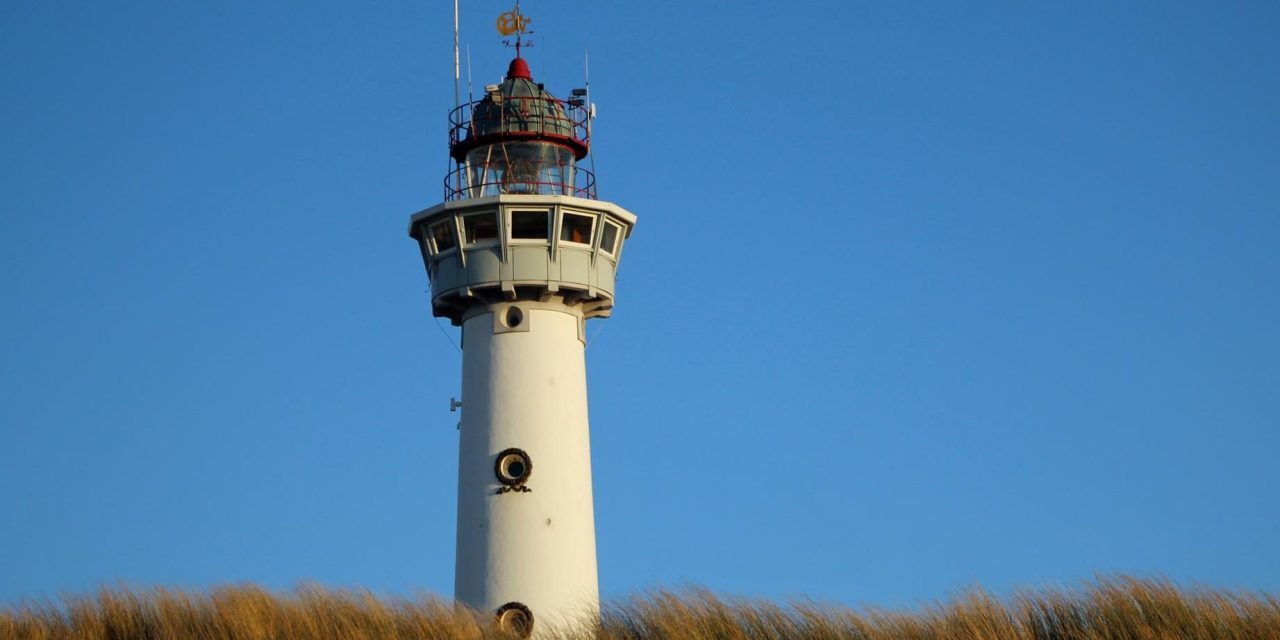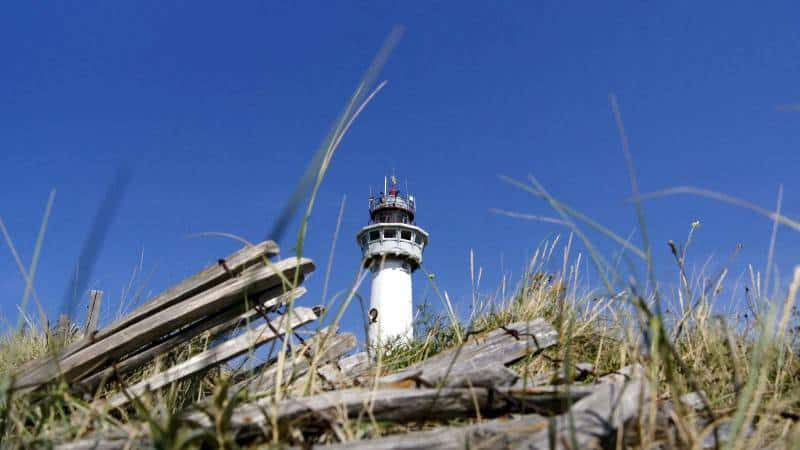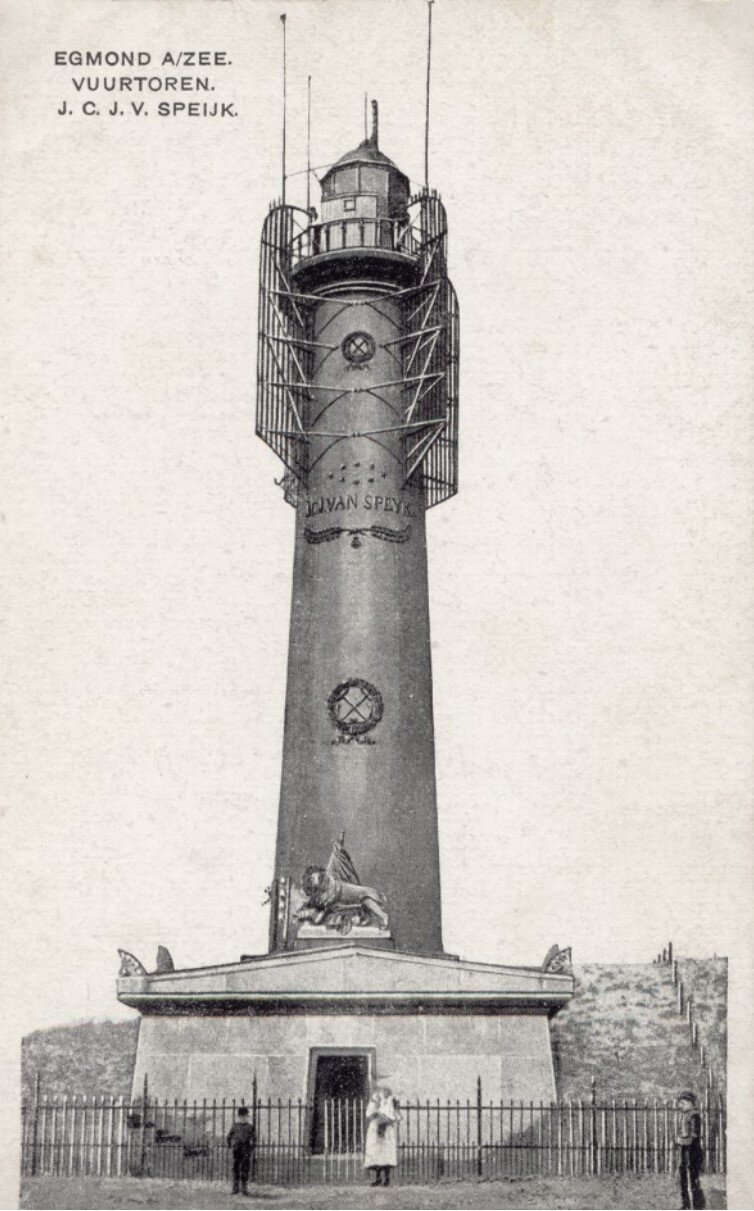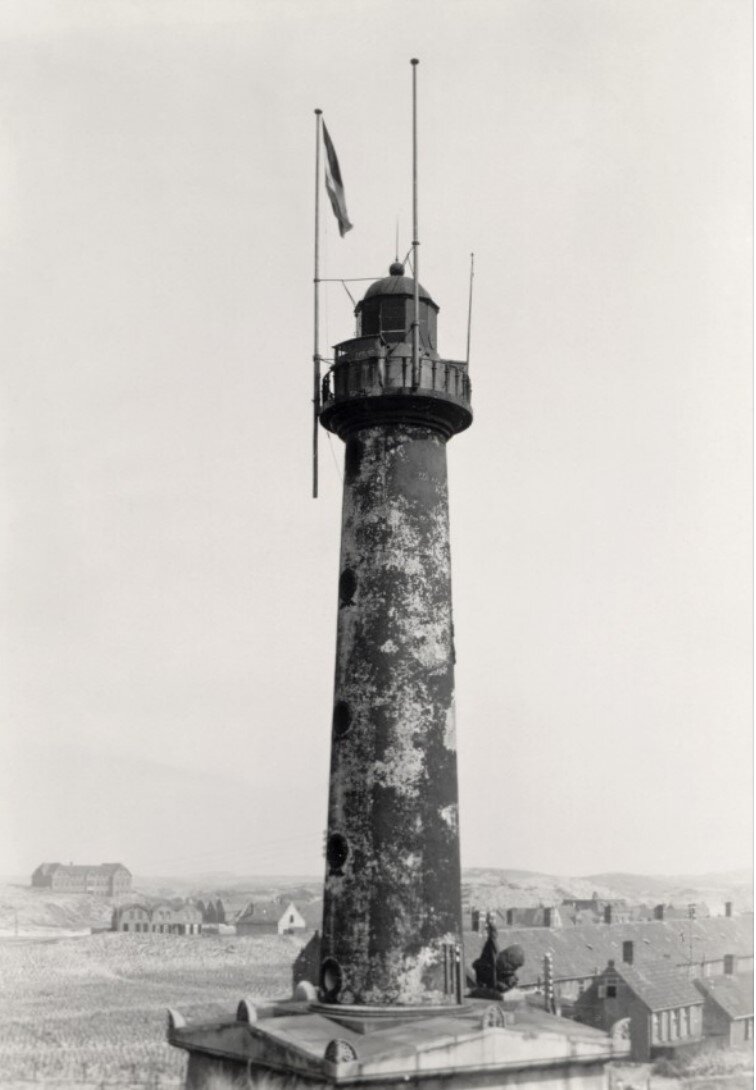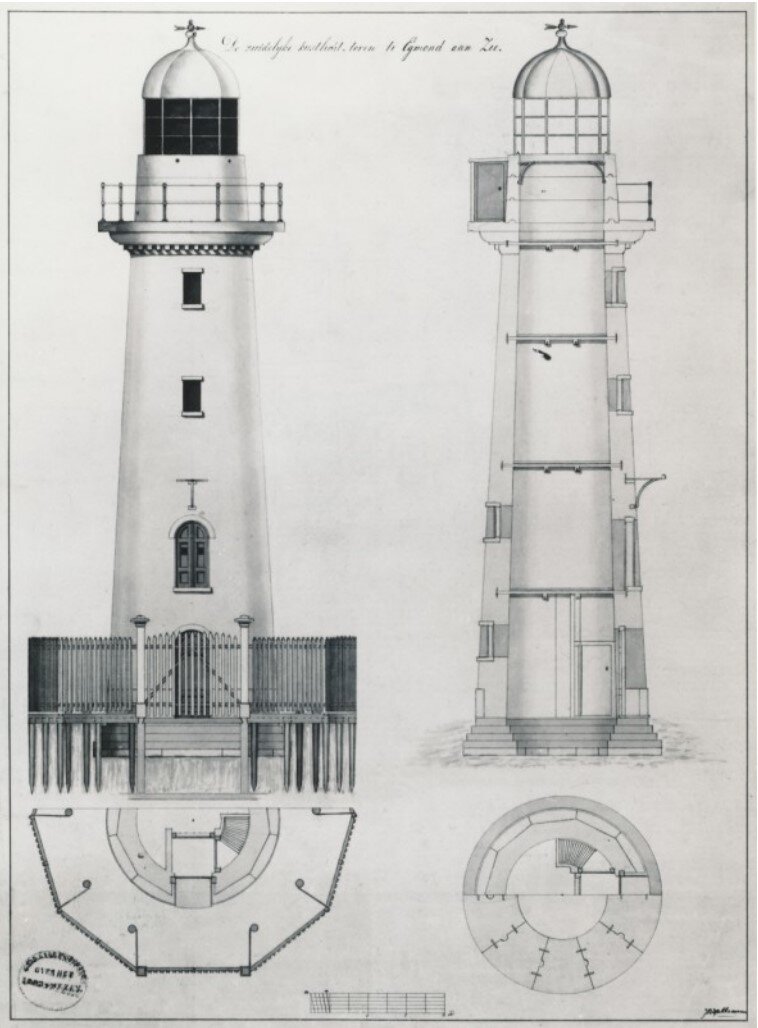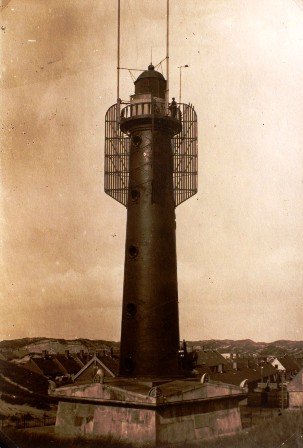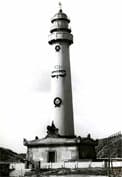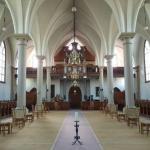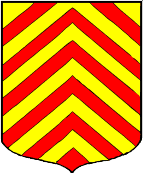Lighthouses capture the imagination
Lighthouses capture the imagination and all over the world, places with a lighthouse are a bit special. The people of Egmond, and many with them, intensely love “their” tower that defines the appearance of the village. In many Egmonder homes, here or elsewhere, “the tower” hangs on the wall. The light of the “Jan van Speyk” is at 37 meters above sea level, and the light characteristic listed in the shipping manuals is five seconds on and five seconds off.
It is perhaps the most photographed and painted structure in the wider area. In earlier years, the tower has taken various forms and there are many pictures of it. At all hours of the day and in every orphan condition, the beautiful white tower stands out differently against the sky. At dusk and dark, the glow of the faithful watchman falls over the village.
Lighthouse keepers.
The tough profession of beacon stealer, light keeper, coast guard or lighthouse keeper has been practiced in Egmond aan Zee for centuries. Originally, they must keep fires burning at night high on “four boats” to guide returning fishermen. That involves a lot of lugging wood and later coal. By 1835, the new lighthouses have a lens system and the lamp burns on oil, meaning that one of the two tower keepers on duty is constantly working to keep the lenses and windows free of soot.
With the advent of electricity in 1922, the tower was modified and they also replaced the rectangular windows with round ones. Starting in 1949, the Coast Guard sat in a cottage on the lighthouse dune. At dark and in storms during the day as well, the man sits at his post and has to stay awake while rarely anything happens.
Contemporary function
The advent of satellite navigation caused many lighthouses and all lightships to extinguish their lights beginning in 1980. The digital duties of the coast guard at Egmond were taken over by a central, national coast guard. After a reorganization, radar posts in Den Helder and IJmuiden were able to cover the entire coast of North Holland, making visual observation unnecessary. Bert de Boer, who had joined as a light keeper in 1978, became property manager until 1990.
The tower is still used as a landmark and control for shipboard positioning equipment and is especially indispensable for recreational boating, which often operates without a state-of-the-art navigation system. The KNRM uses the tower during actions and exercises. The Department of Public Works can use cameras mounted on the tower to monitor sand replenishment off the coast.
In Egmond aan Zee, after an interruption of 1 year, there are again some Plexiglas poetry signs on a part of the promenade and one on the lookout dune behind the lighthouse. In the context of 175 years lighthouse-monument van Speijk , the Literary Working Group Egmond has selected poems that often contain a nod to the romantic praise of the sea. Seven poems overlooking the sea and the lighthouse are worth a stroll.
Restoration 2019
In 2019, the Egmond aan Zee Lighthouse has been completely restored and it looks beautiful again.
History of the lighthouse
(Source: Museum van Egmond)
The South Tower was given four floors. Because it was erected on the site of the old fire beacon, it became the highest lighthouse. Teunis Planteydt, the four-year-old son of shipowner Cornelis Planteydt, laid the foundation stone on May 8.
National memorial. 1838
Architect Jan David Zocher senior was commissioned to create a memorial from an existing structure (North Tower). By removing the windows at the front and giving relief to the smooth shaft only by a single decoration, he tried to create a unity between the tower (memorial) and base (tomb).
The masonry sarcophagus was lined with Bremer bluestone slabs. The lantern kept its original shape, although the eight ribs of this were
semicircular iron columns.
The larger-than-life statue of a lion, designed by sculptor Louis Royer, was placed on the base in August 1841. (I include a photo of the lion taken by Cootje Bronner.
Renovations
The South Tower was sold in 1919 for f. 275 and then demolished.
Rebuilding 1922
First, the top of the tower was demolished. Then the tower was extended by one and a half meters. The wooden stairs were replaced by an iron spiral staircase. The wooden floors were changed to stone spaces. Round windows replaced square ones. Finally, the tower was plastered and connected to the electrical grid. The white group-intermittent light could burn for 1,000 hours.
The emergency lights operated on gas.
In 1967, the tower became a national monument
When it was rebuilt in 1968, the head was lifted, the old turnaround removed and the new lookout designed by F. de Ruijter inserted. The slanted windows were a striking detail. The advent of radar eliminated the need for the light dome for aircraft navigation to be made of glass. The roof was re-covered with copper plates. The weather vane was restored.
The North Tower became the tallest tower at 6 stories.
The shape of both brick towers became the same. A round smooth pillar, narrower towards the top, with a top plate that had toothed mouldings. Above that again came the light house with circulation and balustrade. The bluestone floors were on iron beams and each floor had a window, which was arched and divided into sixes. The faintly curved stick stairs had a handrail on the inside. In both towers came Fresnel lights with a diameter of 1 El (meter). The work was completed in 1834.
North tower becomes monument
On Aug. 5, 1831, Lieutenant at Sea Jan Carel Josephus van Speyk had his gunboat launched into the air in Belgium. With him, 25 crew members and several Belgians died.
On Feb. 11, King William I proclaimed that henceforth the Dutch Navy must always have a ship in service bearing the name J.C.J. Van Speyk.
The board of Collegie Zeemanshoop raised f. 30,000 so that a monument could be erected. A raffle was held to finance this monument. It was not until December 15, 1834, that the North Tower was converted into the Van Speyk Monument.
Future Value
Monument status:
National monument since 1967, no. 14590
Owner and manager:
The Department of Public Works owns and is responsible for maintaining the tower.
Current importance to navigation:
The lighthouse still functions as a reconnaissance light and sector light.
Alternative uses of the property and accessibility:
The lighthouse is no longer officially manned. Volunteers from the Royal Dutch Rescue Society (KNRM) set up the lighthouse during the months of July and August
on Fridays and additionally open to the public on special days. They also give tours upon request. The KNRM also uses the tower in rescue operations and exercises. The Department of Public Works can use the cameras placed on the tower to monitor sand movements off the coast.
Bonding with local people:
The Egmond people (“Derpers”) intensely love their tower, which defines the appearance of the village. In many homes of Egmonders, a picture of the tower hangs on the wall. It is perhaps the most photographed and painted structure in the wider area.
The lighthouse’s 175th anniversary in 2009 was celebrated extensively. To mark this anniversary, local parties, funded by sponsorship money, installed an installation to illuminate the lighthouse from below on the outside. In 2016, this facility was in need of maintenance, and once again several local agencies, including the Village Interest Association, worked to raise the necessary funds.



